|
Only have a minute? Listen instead
Getting your Trinity Audio player ready...
|
EDINBURG — Two-and-a-half years after breaking ground and after what seems like an eternity for residents who have waited for a children’s hospital that they don’t have to drive out of the Rio Grande Valley for certain care, Driscoll is now preparing to open its doors here with much in store leading up to its May opening.
Driscoll Children’s Hospital Rio Grande Valley President Matt Wolthoff gave The Monitor a tour of the new facility Thursday, walking journalists through some of the tech and state-of-the-art equipment available for staff and patients, some of which he said isn’t even available at the Corpus Christi hospital where Valley residents once had to travel.
The hospital broke ground on Nov. 16, 2021 and is scheduled to open its doors to the public on May 1, culminating work on a $105 million project of which funding was split between $55 million from DHR Health and $50 million from Driscoll.
One can see much of where that investment went in a walkthrough of the hospital’s eight floors.
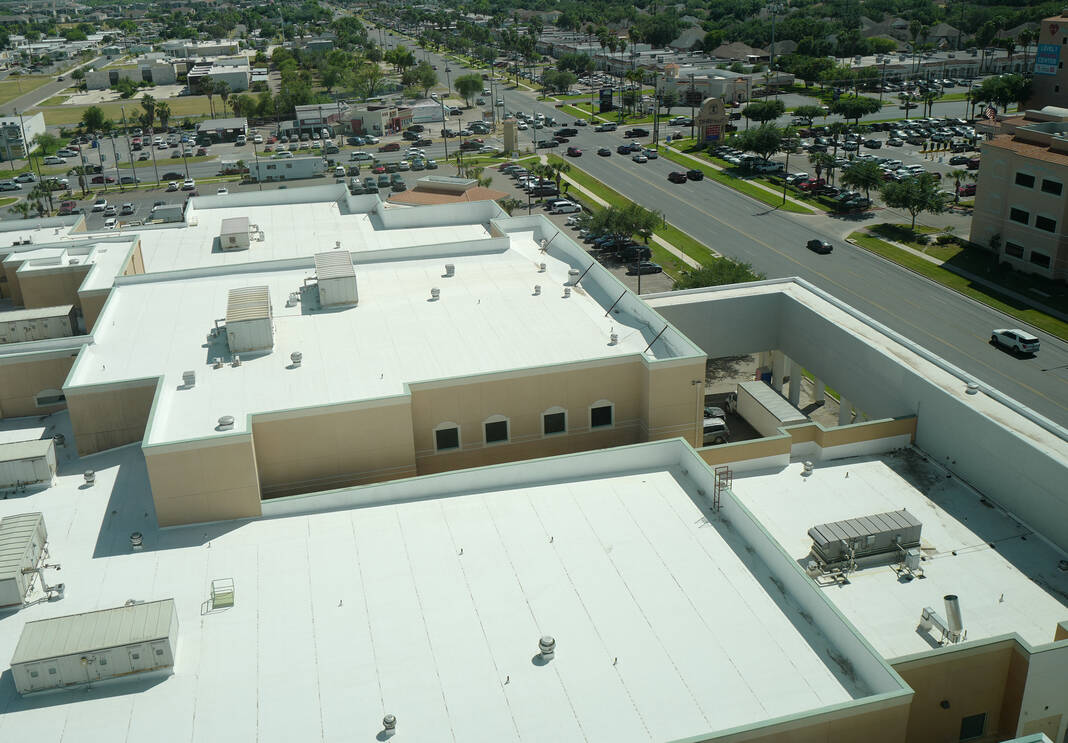
EIGHTH FLOOR
As we stepped off the elevator onto the top floor, which is where the tour began, there was a feeling of tranquility as sunlight shone through a large window to the right of the elevators. It’s that sense of calmness Wolthoff hopes to emulate throughout the hospital with windows making up much of the interior, allowing in natural lighting.
Through the window near the elevators, one could see the Edinburg and nearby McAllen area from an aerial view as well as the sky bridge that connects the Driscoll hospital to its Level III neonatal intensive care unit, or NICU, located within DHR Health Women’s Center.
Before entering the patient area of the eighth floor, to the left of the entrance is a hallway dedicated to Driscoll’s Pediatric Residency program, which Wolfhoff said is a first in the region that they hope to start in the summer of 2026. The area includes sleep rooms and a conference room for the residents.
“We are going to have the Valley’s first pediatric residency program,” Wolthoff said. “Within two years of us opening, we will have our first residents here, training.”
Walking through the main floor entrance one could see the nursing desk to the left.
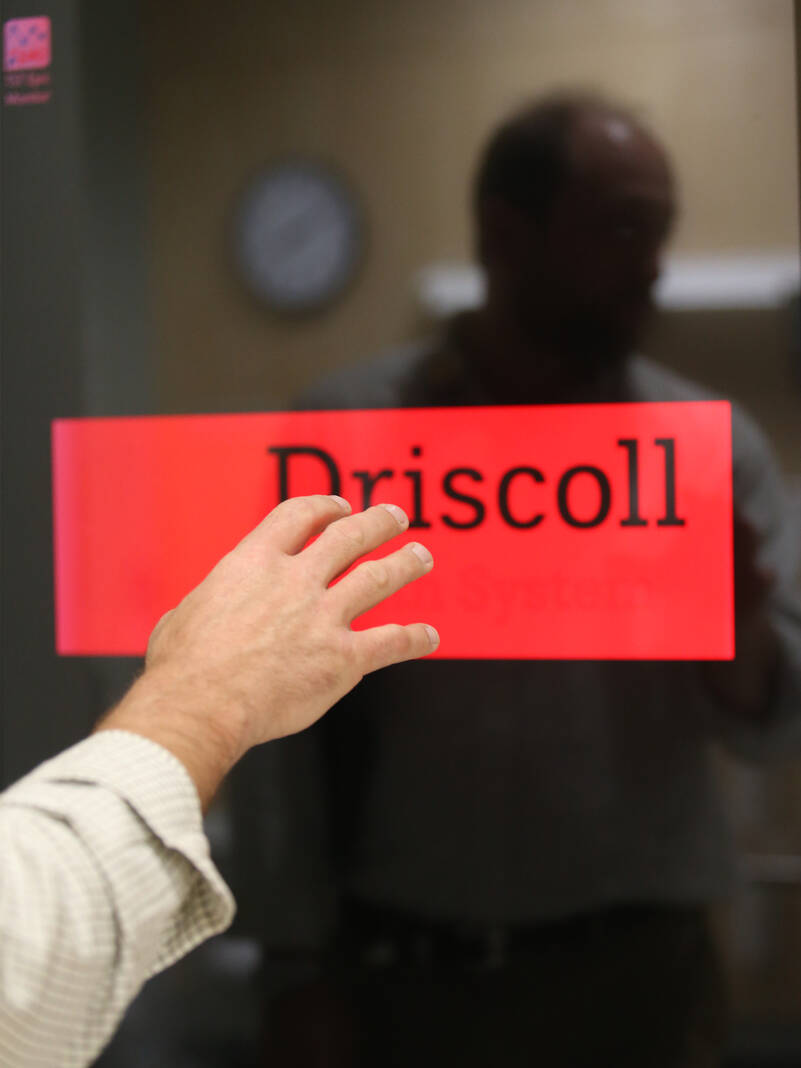
The floor, which Wolthoff explained is their standard 16-bed layout, includes digital door signs that help keep staff informed on the status of the patient and room.
“If the patient is in some sort of isolation status, you have any kind of infection prevention measures, if you need your nursing staff to wear a gown before they go in, all of that can be posted here,” Wolthoff said, adding that the status of the room can also be updated once the patient has been discharged.
In the wise words of his son, each patient room has an even “cooler” device known as a digital whiteboard.
Rather than using a traditional dry-erase board where nurses write the information for the day, the digital whiteboard includes an electronic medical board where the doctor can pull up electronic medical records such as imaging.
“You have a full computer but you also have the ability to write on it and it’s all touch screen,” Wolthoff said.
The rest of the room looks like a traditional patient room with monitors, a pull-out sofa for family members, a bathroom and a flat-screen TV.
At the end of the hall, to the right, is a playroom where child life specialists help reduce any stresses or anxiety a child may experience while hospitalized.
“If a child is giving blood or there is a procedure that’s kind of uncomfortable for the child, a child life specialist comes in and diverts their attention and plays with them and makes that child a little more calm about that experience, and thus allow our staff to do their jobs and take care of them,” Wolthoff said.
The play area will include games and other items kids can interact with during their stay.
Along with the specialist, the hospital also has a facility dog — Tesla, a golden retriever who works with the child life department.
He explained that floors eight, seven and four are all pediatric, 16-bed units.
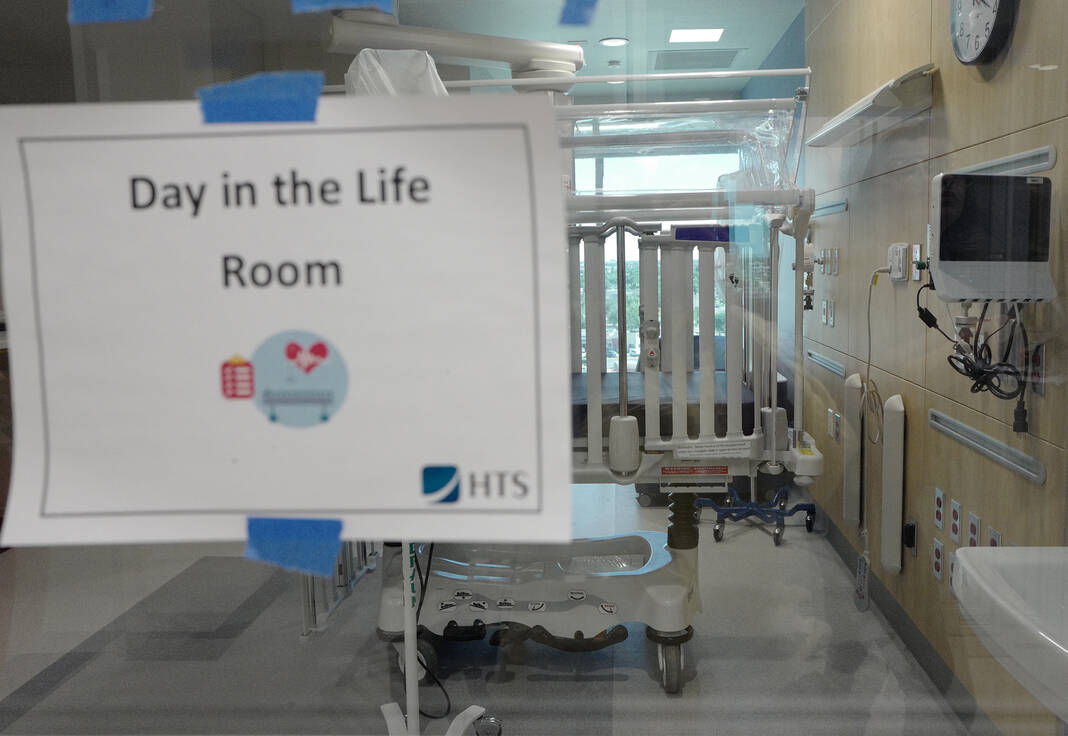
SIXTH FLOOR
Wolthoff explained how the “Day in the Life” rooms work while waiting for the elevator to go to the sixth floor, rooms which are located throughout the hospital.
On April 3, during the “Day in the Life” scenarios, they conducted dry runs of 27 scenarios that they anticipated could happen on any typical day at the hospital.
As we walked through the hall leading into the sixth floor Wolthoff explained that one of their priorities is language accessibility. They will have a device called the Language Line, a cart that helps translate various languages.
“If anybody from anywhere, any nationality comes in, we have the ability to use that cart to translate different languages,” Wolthoff said.
Referring to Spanish, he added that they are trying to get all bilingual staff, which makes up about 95% of staffing at the hospital, to become certified medical translators.
“When it gets into medical terminology you want people who are translating who really have a good knowledge of how to translate with that specific terminology,” Wolthoff said, adding that they have a six-week course for certification.
Walking into the pediatric intensive care unit located here on the sixth floor, the nursing desk is immediately to the left of the door with the ICU rooms stretched across the right and left sides of the hall.
The ICU includes eight beds with each room having a medical boom, a device that connects the monitors and other tech nurses may need.

The boom allows the patient to move around the room while still remaining connected to the necessary devices.
The beds also allow the nurse to transfer the patient easily.
In the corner of the room, there is a larger sleeper sofa than those in the regular patient rooms due to ICU stays being lengthier.
Wolthoff explained that the fifth floor has room to expand the ICU with an additional 10 beds that will serve as step-down rooms. He added that the contractor drilled out the plumbing in preparation for the eventual expansion.
As we headed toward the elevator, Wolthoff pointed to the waiting room where patients’ family members could take a break from the ICU and freshen up by washing their clothes, using the washing machine and dryer provided there, as well as use the bathroom.
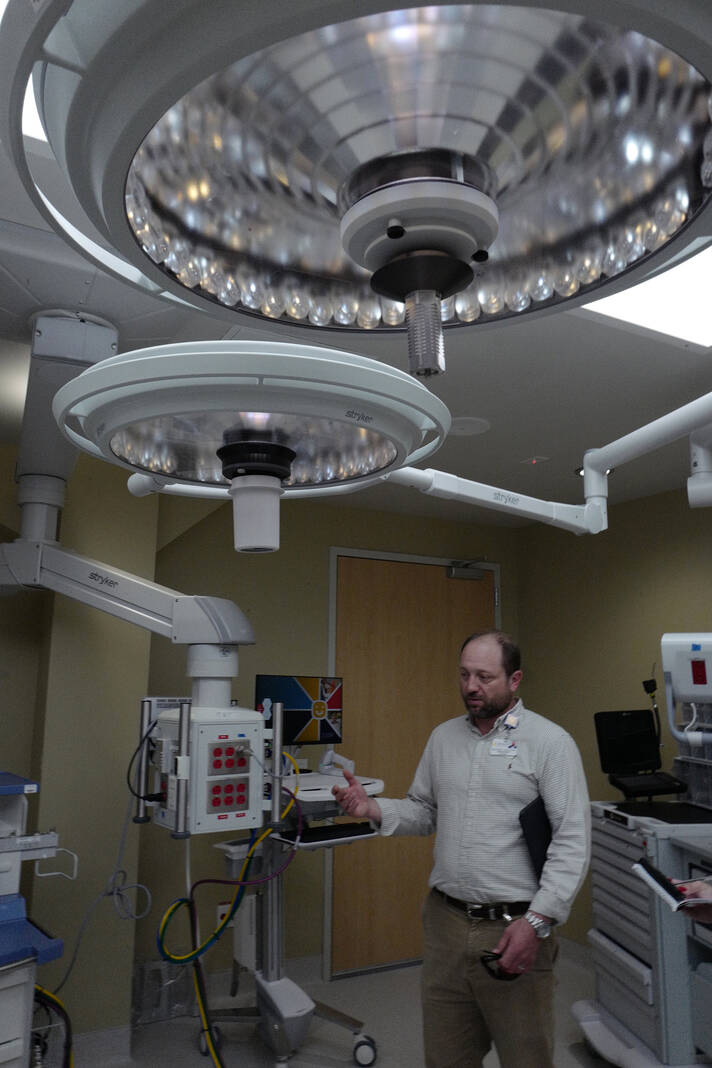
SECOND AND THIRD FLOORS
Walking onto the third floor, also known as the day surgery floor, there is a check-in desk to the right.
There is a window to the left of the desk for the pharmacy, which takes up much of the third floor. The pharmacy will include the medications necessary as well as “clean rooms” for chemotherapy.
To the far right is the entrance to the day surgery area where they have 16 individual bays that allow for surgical prep as well as procedures.
Wolthoff explained that their anesthesia team, who currently work for Rio Grande Regional Hospital in McAllen, will also be working for Driscoll. The team is made up of nine board-certified pediatric anesthesiologists.
As we waited for the elevator to go down to the second floor, Wolthoff explained that on the day the hospital opens all DHR Health pediatric patients will be transferred to Driscoll and all NICU patient info will be transferred to the Driscoll system.
“Part of this arrangement was that we acquired the pediatric service line from DHR so they are no longer going to do pediatrics, so on day one everything flips over to us,” Wolthoff said.
On the second floor similar to day surgery, there is a check-in station to the right as well as a waiting area with a large window overlooking the DHR Health Labor and Delivery building.
To the left was the entrance to the recovery area of the operating room, or the OR floor.
Once you pass the entrance there is a row of post-anesthesia care unit (PACU) bays where patients will recover from surgery. There are a total of 16 PACU bays, all except for one are open bays. To the right of the recovery area is an isolation room for patients with infectious conditions.
In the back area of the floor are eight operating rooms, where they’ll be able to conduct a variety of surgeries from dental cases, ear, nose and throat, general surgery, trauma to orthopedics.
Seven of the rooms are standard-sized ORs that have bright white lights and various medical booms to allow for better movement.
“We brought our surgery team from Corpus and they were just blown away. They were so impressed by these rooms. I think they’re going to be asking for all this equipment,” Wolthoff said jokingly.
He explained that the video equipment is state-of-the-art tech by a company called Storz Medical that allows surgeons to guide their procedures.
At the end of the hall is operating room no.8, which is larger than the standard ORs due to it being for surgeries such as orthopedics that require more medical staff.
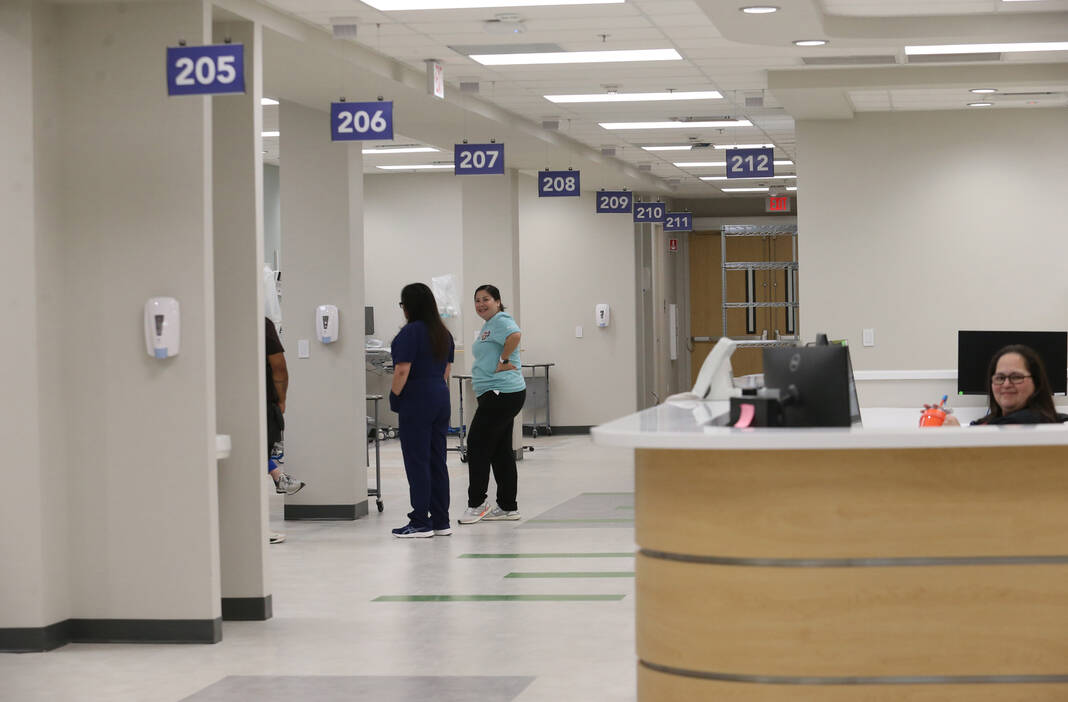
FIRST FLOOR
On our way to the elevator, Wolthoff explained that the second floor is the one that has the sky bridge that connects to DHR Health Women’s Center.
Exiting the elevator onto the first floor one can see the main entrance area to the right as well as the gift shop, admission desk and waiting area.
To the left of the elevator is a hallway leading to the radiation area where patients receive CT scans and MRI scans.
Wolthoff said that the CT machine has a 560-slice count.
“What our radiology folks like to say is that It can take a full CT in one breath of a baby,” Wolthoff added. “For kids, you want a faster CT because you know kids have a tough time staying still.”
Although still under construction, the neighboring room will have an MRI machine in the center with a TV in the back to help put the patient at ease.
He added that the MRI room has taken more time to complete due to some of its more specific and sophisticated materials, such as shielding within the walls and the MRI having its own chiller to keep it cool due to the MRI producing a lot of heat.
Down the hall to the right is a door leading to the emergency room.
“It’s important to have imaging or radiology next to the ER for efficiency,” Wolthoff said.
Past the doors, is the eight-bed ER which is a narrow hallway that stretches left and right with an ambulance entrance in the center.
“We recognize that eight beds is not enough for the volume that we expect to have, we do have the ability to basically curtain off,” Wolthoff said. “If we get into a surge situation, where we have a lot of patients, we can put curtains in the middle and put more than eight patients in here.”
In each ER room, there are the necessary carts and materials for emergency care as well as a blood storage unit.
Wolthoff explained that they also have a pneumatic tube system that travels under McColl and takes lab specimens straight to the respective labs.
He hopes the ER will eventually garner a Level III trauma designation.
“This is just the starting point, we’re going to continue to grow service, we’re going to continue to expand services, we’re going to continue to recruit pediatric specialists,” Wolthoff said. “We want to have a full team of pediatric specialists that live and work here in the Valley.”
As of Thursday, Wolthoff explained that they are about 90% complete in regards to staffing but can open on schedule regardless of the few openings that remain.
Although the hospital is scheduled to open May 1, Wolthoff still plans to host a ribbon cutting for the hospital in either June or July.
“We want it to be more like a festival … kind of like a block party,” Wolthoff said with a smile.
Driscoll Children’s Hospital Rio Grande Valley is located at 2820 W. Michelangelo Drive in Edinburg.




